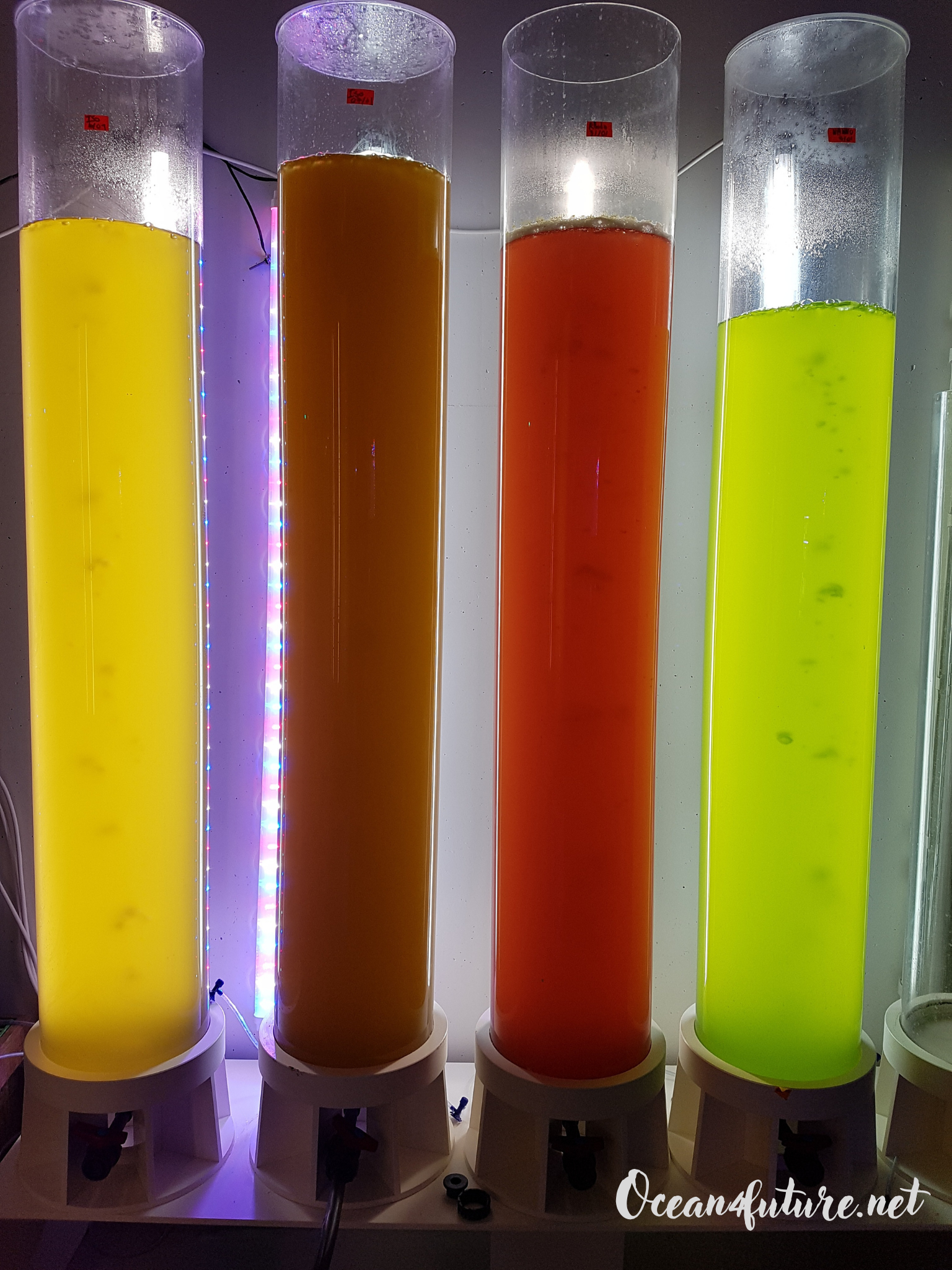Research projects: Aquaculture & biomass valorisation
The mass production of micro-algae and copepods are the base of several projects of aquaculture developped by Sami Souissi during two decades.
He was a pionner in 2011 to build a pilot project situated in the Aquarium Nausicaa to mass culture copepods to enhance ex-situ conservation program and breed very difficult ornamental fishes as well as other emerging fishes in aquaculture.
This project was first endorsed by the Economy Cluster Aquimer in 2011: see the abstract here.
Recently several species of difficult fishes were successfully breeding in the framework of COPEFISH project including some first records in the world : see an example here.
When reaching juvenile stage the fishes sustainably produced in COPEFISH are given to the Aquarium Nausicaa to be presented to large public or exchanged with other aquariums to promote biodiversity conservation: see an example here (in French).
Sami Souissi is also interested in the valorisation of the biomass produced in a very sustainable way by micro-algae and copepods. For micro-algae he is involved in the European INterreg project VALGORIZE aiming to explore the valorisation of algal biomass for a better taste and food & feed applications. In addition the bioactivity and potential use of these biomasses in health applications are explored in collaboration with the BioEcoAgro French-Belgium Institute.

The mass-culture of copepods is really a challenging task that allowed Sami Souissi and his group and collaborators to participate to several national and international reasearch projects. The video is showing an example of the estuarine copepod Eurytemora affinis swimming actively and indicating the good health of the mass culture reaching high density. In addition to aquaculture, these copepods were used in several interdisciplinary reasearch projects including active collaborations with top research institutes in Europe such as Max Planck Institute for Dynamics and Self Organiozation in Germany, ETH Zurich a top 10 in the world universities, Toulouse Institute for Fluid Mechanics in France. All these collaborations with top physics and fluid mechanics institutes allowed to study the active swimming behaviour of copepods in real turbulent conditions and obtain several significant scientific results (see for example the PNAS paper here). Other universities in Asia are also involved in sore research based on this species for the field of aquaculture, molecular biology, genomics and ecotoxicology.
In the past projects Sami Souissi was a partner and international expert involved in the Danish Strategic Research project IMPAQ: IMProvement of AQuaculture high quality fish fry production focusisng on the role of copepods in aquaculture. A themed session entitled Advances Using Copepods in Aquaculture was published in the Journal of Plankton Research, see here.
The video below shows a sample of the mass culture of the copepod Eurytemora affinis containing all developmental stages. The adult stages are visible with their typical swimming behaviour that has been intensively studied by Sami Souissi and his collaborators. The ovigerous females, carrying an egg sac are numerous in this sample confirming their excellent physiological status and the good culture conditions. The small individuals swimming in the background of the larger ones are composed of larval (=nauplii) and juvenile (copepodites) stages. The typical size of an adult copepdo is 1.2-1.6mm in total length.
